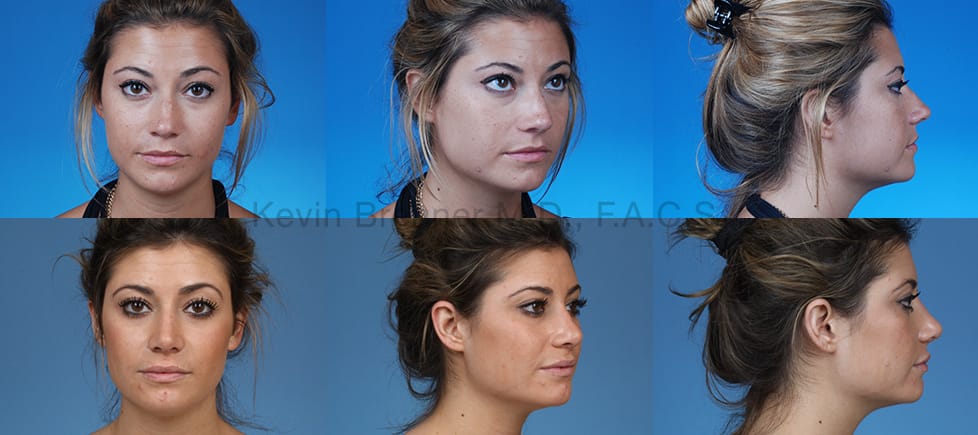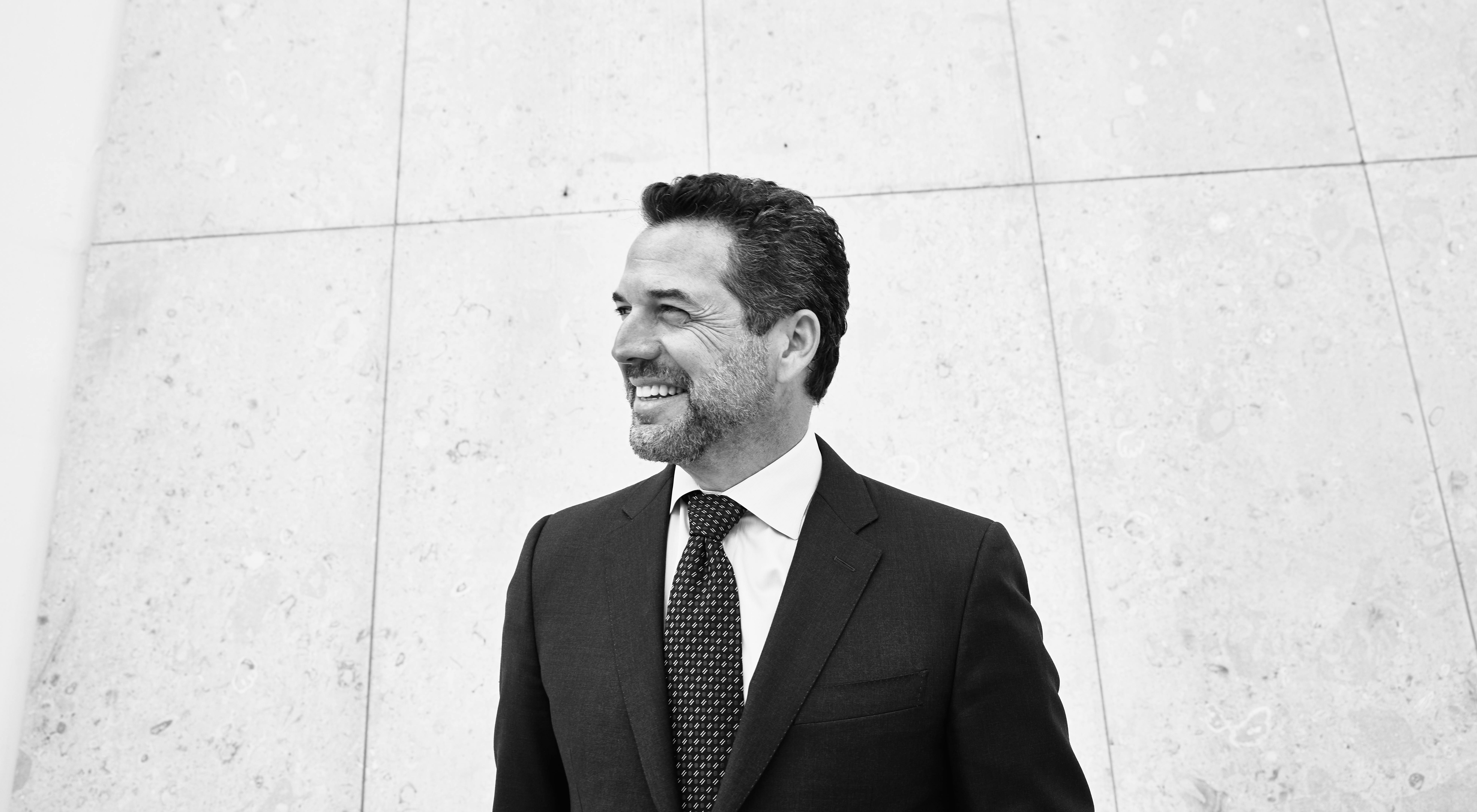Top nose job surgeon Dr. Kevin Brenner
You love your family...but you don’t have love the nose you inherited. When the nose is out of balance with the rest of the face, it can overshadow the other features. Bringing the nose into proportion and creating balance is a singularly challenging procedure on any patient but even more so on patients of ethnic descent.
Ethnic rhinoplasty is a specialized niche within the field of nose surgery. Ethnic patients don’t want cookie-cutter westernized noses. They want refinement and softening of the nose to balance the face, not a nose that doesn’t fit the rest of their ethnic features. A board-certified plastic surgeon, Dr. Kevin Brenner is a veteran revision rhinoplasty surgeon with thousands of procedures to his credit.
He is a double board-certified plastic surgeon with additional specialized training in difficult revision and reconstructive nose surgery. As a result, he consistently gives his ethnic patients the refinement they desire without eliminating the essence of their heritage during his ethnic rhinoplasty surgeries in Beverly Hills.
He measures the changes he does in millimeters; a little correction can make a profound difference in appearance. Going too far is an error that Dr. Brenner sees all too often. He performs a substantial number of revision nose surgeries correcting these errors.

Gallery
View GalleryEthnic differences in a nose job
Each ethnicity presents different challenges in ethnic rhinoplasty, due to structural differences in the nose. Rhinoplasty is aimed at bringing harmony to the face and in the case of ethnic nose surgery, the underlying structure varies considerably from patient to patient.

Asian Nose Job
Asian noses have low bridges and round, wider tips. This makes the nose look shorter and flatter. The shallow bridge also makes wearing glasses difficult. Correcting a low bridge requires the use of cartilage grafts or the use of an implant to add projection and dimension to the bridge.
Hispanic Nose Surgery
Hispanic noses have wider and lower nasal bridges, wider nostrils and a nasal hump. The nose is smaller in relation to the broader face and the skin tends to be thicker.
Middle Eastern Rhinoplasty
Middle Eastern noses tend to be long with a bulbous or prominent tip that points down toward the chin. There can also be a noticeable hump on the bridge which gives the false impression that there is ample bone and tissue to work with. Often the internal structural support will need to be carefully altered due to the fact that that the underlying structure can be deceptively weak. Reducing the tip and refining it by mere millimeters in ethnic rhinoplasty will shorten the appearance of the nose simply by refining this one area.
African American Rhinoplasty
African American noses differ widely depending on ancestral heritage. Some noses have a high bridge and a defined downward facing tip covered by thin skin. Others have wide flaring nostrils and low nasal bridges covered by thick skin. Still others have short nasal bones and wide nostrils. The surgeon is challenged with refining these features while maintaining functionality or in many cases, repairing undetected restrictions within the nose.
Techniques of Refinement
Patients with low or flat bridges will need a graft to create shape and lift. Material to be used for the graft is usually taken from the patient, either from the rib or the ear. Occasionally a silicone implant will be used but most surgeons prefer to use the patient’s own tissue to ensure the ethnic rhinoplasty correction ‘takes’ and to avoid any issues with rejection.
If the nostrils are too wide, they can be refined through a technique that removes a very small wedge-shaped section of tissue at the base of the nostrils, to the side. The sutures are placed inside the nose or within the curve at the base of the nostrils. This then narrows nostril flare creating balance and refinement without radically changing the shape of the nose.
One of the most common reasons that patients seek ethnic rhinoplasty is a bulbous tip. There can be too much cartilage or fatty tissue in the tip which is not adequately supported. In some cases, this is due to the fact that the cartilage supporting the tip of the nose is weak. African American and Hispanic noses also are prone to having thicker skin over the nose which can contribute to the appearance of a bulbous tip.
Correcting this problem is done in two stages. First, the excess fatty tissue is removed, refining the tip. This is followed by the action of building a stronger support system or frame using cartilage harvested from the ear or septum during your ethnic rhinoplasty in Beverly Hills.
Candidates for Ethnic Nose Surgery
Patients must be in good health, with any underlying medical conditions well-managed by their primary care physician. Patients who smoke must be willing to give it up for several weeks before and after the surgery.
It is important that patients have realistic image goals in ethnic rhinoplasty. Working with hundreds of ethnic patients over the years has given Dr. Brenner the ability to see the potential changes that will best suit the patient’s overall facial characteristics in ethnic rhinoplasty.
Wondering if ethnic rhinoplasty is right for you?
Dr. Brenner understands that many of his ethnic patients are hesitant to commit to surgery because they are aware of the surgical failures made famous by celebrities. Whether or not a nose job at his Beverly Hills surgical center is the right thing to do is a decision only the patient can make. He feels his role is to provide his patients with all of the information they need so they can make the right decision.
Getting started is a matter of arranging an initial consultation to discuss the procedure and find out what Dr. Brenner suggests.
Ethnic Rhinoplasty FAQs
How is ethnic rhinoplasty different from traditional rhinoplasty?
Ethnic rhinoplasty focuses on enhancing the nose without altering the natural characteristics that define a person's ethnicity.
Who is a good candidate for ethnic rhinoplasty?
Good candidates are individuals looking to refine their nose while maintaining their ethnic identity and overall facial harmony.
How long does ethnic rhinoplasty surgery take?
The procedure typically takes 2 to 4 hours, depending on the complexity of the case.
Are there risks associated with ethnic rhinoplasty?
Risks include infection, scarring, or changes in sensation, but complications are rare when performed by an experienced surgeon.
Will ethnic rhinoplasty change my facial identity?
No, the goal is to enhance the nose while preserving your unique ethnic features and facial balance.
Is ethnic rhinoplasty painful?
The procedure is performed under anesthesia, so there is minimal discomfort. Post-surgery, mild swelling and bruising may occur.
How soon can I return to work after ethnic rhinoplasty?
Most patients can return to work within 1 to 2 weeks, depending on the extent of the surgery and their healing process.
Will insurance cover ethnic rhinoplasty?
Insurance may cover the procedure if it's performed for medical reasons, such as breathing difficulties, but not for cosmetic changes.
Can ethnic rhinoplasty address breathing issues?
Yes, the surgery can improve breathing by correcting structural issues like a deviated septum while enhancing the nose’s appearance.
When will I see the final results of ethnic rhinoplasty?
Full results are usually visible within 6 to 12 months, as it takes time for swelling to completely subside.
Learn more about Dr. Brenner’s rhinoplasty procedures
Primary Rhinoplasty
Primary rhinoplasty, or simply "rhinoplasty", is nose surgery to address aesthetic issues of the nose.
Revision Rhinoplasty
Revision rhinoplasty addresses patients who have previously undergone nose surgery, but didn't obtain the results they desired.
Septoplasty
Septoplasty, also known as breathing correction or functional rhinoplasty, addresses actual functional issues of the nose.
Learn More About Dr. Brenner
- Renowned Beverly Hills Plastic Surgeon
- Board-certified plastic and reconstructive surgeon
- Board-certified general surgeon


